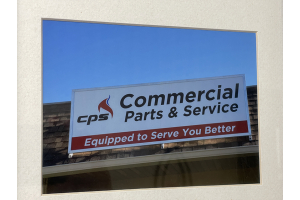All About Commercial Ice Machines

The modern technological era encourages the average consumer to take every day conveniences for granted. The truth is even a simple product like a glass of soda required some pretty fancy feats of invention to bring it to the restaurant table. We’ll take a brief peek at the workings of the machine that restaurants and theaters across the globe use to keep their customers’ drinks frosty: the commercial ice maker.
The Use: Despite its modern association with the food industry, the first true ice machine was originally developed in the 19th century to make ice for reducing patient’s fevers. Today, most restaurants, convenience stores and taverns in the country have at least one ice maker somewhere on their property, if only for keeping sodas chilled. They provide a ready supply of clean ice that can be stored in large quantities with the connecting ice bin and rapidly replenished as it’s consumed.
Ice has nearly countless uses in food service, for everything from food preservation to mixed drinks to being an ingredient in certain recipes. With this demand, it’s not difficult to see why ice makers have been so widely adopted for their vastly superior rate of ice output. The original method of water filled trays in a freezer doesn’t even compare to the automated, high volume ice creation of even the most lackluster ice maker.
The Tech: The commercial ice maker isn't a very imposing contraption. Most are considerably smaller than the average refrigerator. At first glance, it’s almost hard to believe these machines can churn out a gallon of ice per hour. Yet their internal parts are no different than any other refrigerating device, with all of the key components: a condenser, an evaporator, a compressor, and a throttle valve.
The compressor, condenser and throttle valves all work together to turn low pressure refrigerant vapor into high pressure refrigerant liquid. The refrigerant liquid is guided to the evaporator, where it removes heat from water and allows ice to form. The heat is then radiated out the back or sides of the machine and away from the bin where all the ice is stored. Different manufacturers have their own preferences on how all these components are arranged and whether ice or water should be the final vector to vent the heat byproduct, but the essential layout of ice machines remains the same regardless of the brand.
But how does the machine make clear ice? Ice cubes from a home freezer are often cloudy, with air trapped beneath the surface. Ice makers cleverly get around this by maintaining a constant water flow. The ice forms bit by bit, resulting in ice free of bubbles and clouding. This is another reason restaurant owners prefer ice makers to freezer made ice: clear ice makes for better presentation to customers.
The Maintenance: Like any complex bit of technology, ice makers require check ups if they’re going to keep drinks cold and swelling down. There are a few hiccups that proprietors should be aware of when running one of these fine machines
Ice machines use a lot of water, so molding can become an issue. Regular cleanings must be adhered to if mold is to be kept out of the machine and, more importantly, out of the ice bin. In general, ice machines will require some minor disassembly to clean properly. The manufacturer will also often have their own chemical treatment and cleaning agents that can be added to the machine. If molding is occurring despite cleanings or if there’s any doubt what type of cleaning agent to use, it’s best to consult the manufacturer or their distributors before operating the machine.
The major components of ice makers are pretty reliable, but there are several smaller parts that the larger apparatus requires to work properly. The manual should be read in detail before any cleaning or disassembly is performed, so as to avoid pulling wires loose, snapping plastic mounts, or damaging the smaller diagnostic parts. An example of one of these critical devices is the ice thickness gauge probe: it’s prominent, fragile, and essential if the machine is to function properly. It can easily be damaged and will prevent ice from forming if it’s inoperable.
Most parts for these convenient machines are easily replaced by commercial parts distributors. Commercial Parts and Services carries parts for many ice machine brands, such as Manitowoc, Scotsman, and Hoshizaki American. Be sure to check out our site for a list of our ice machine parts and manuals.




